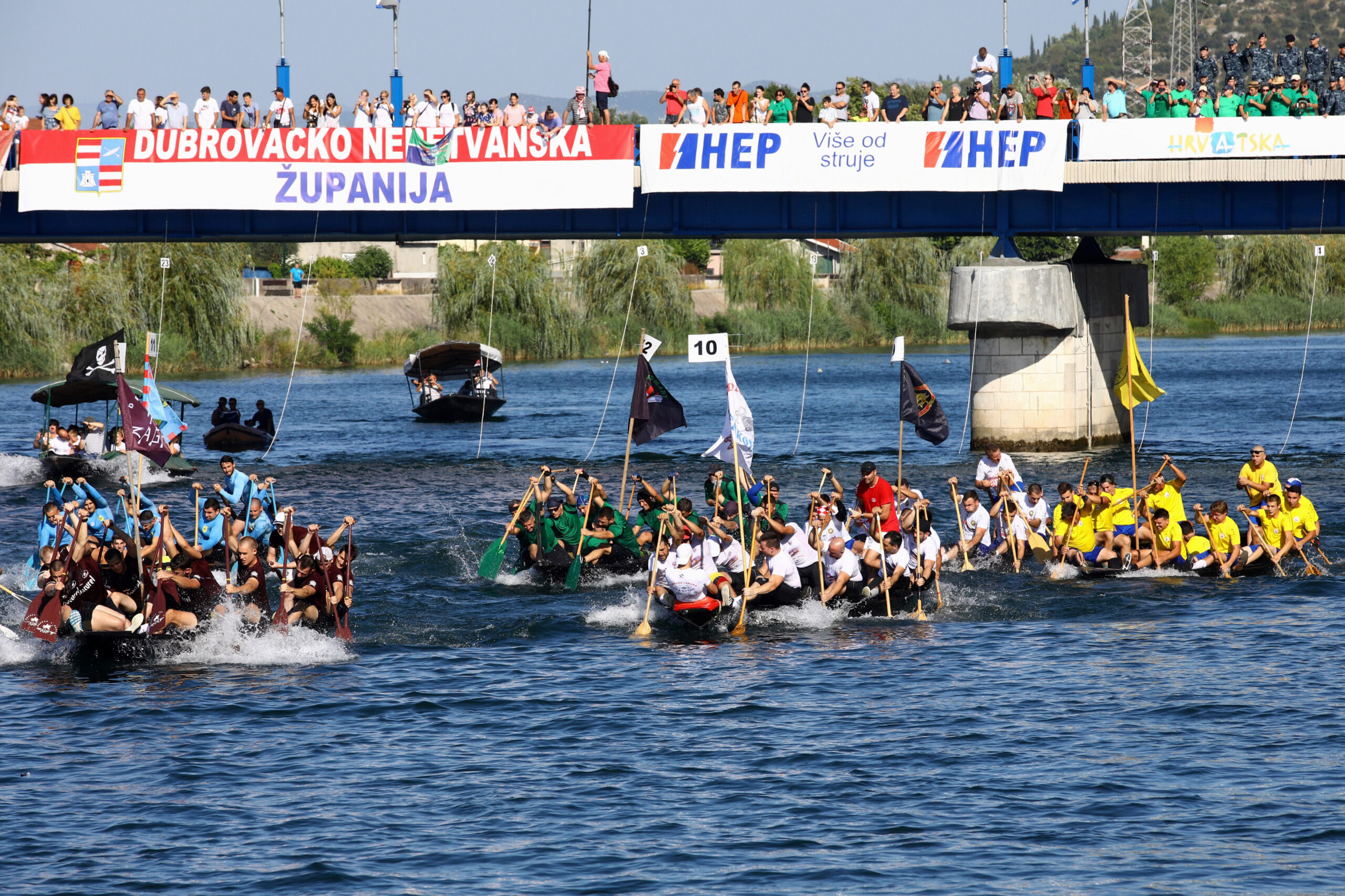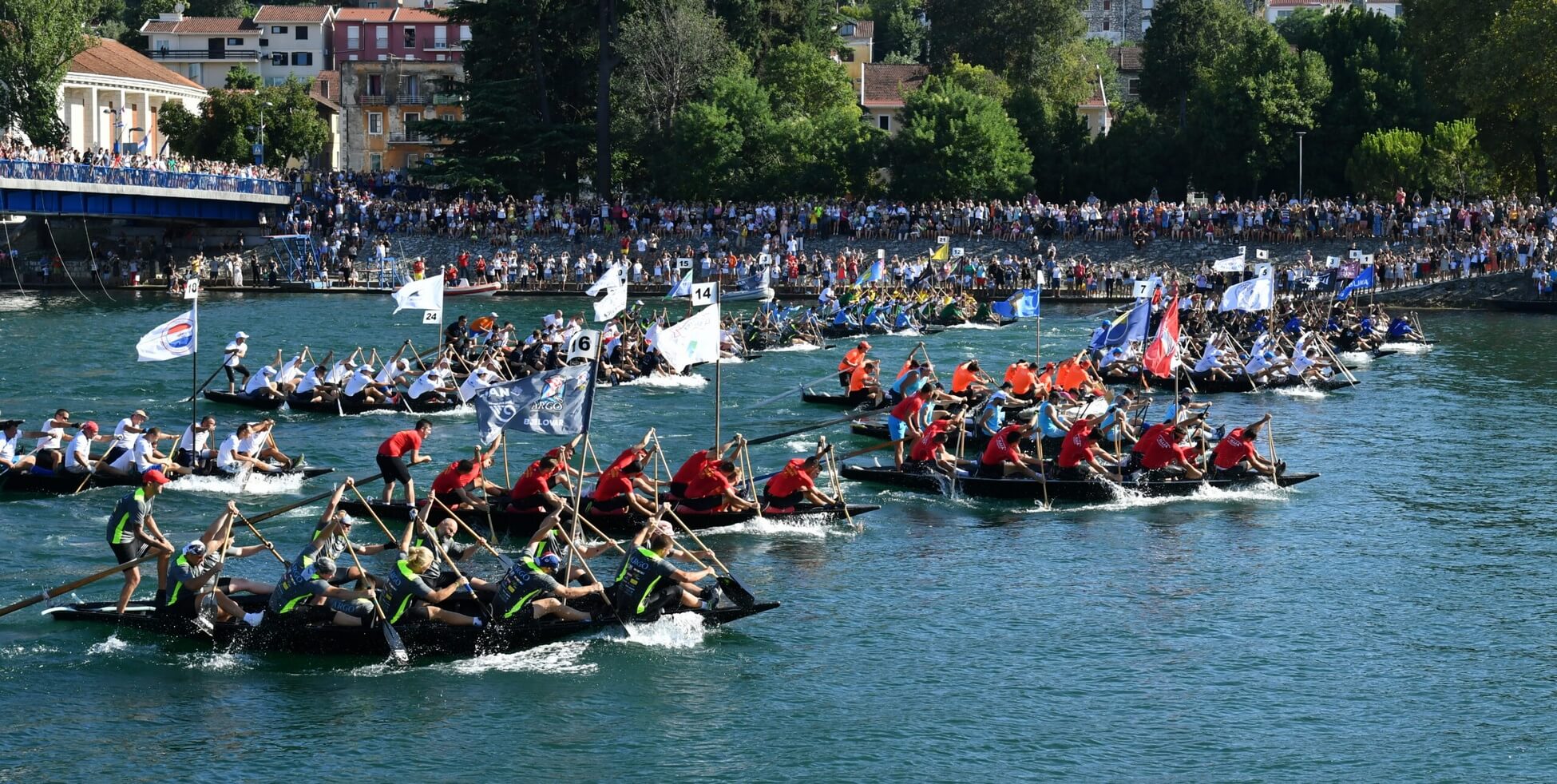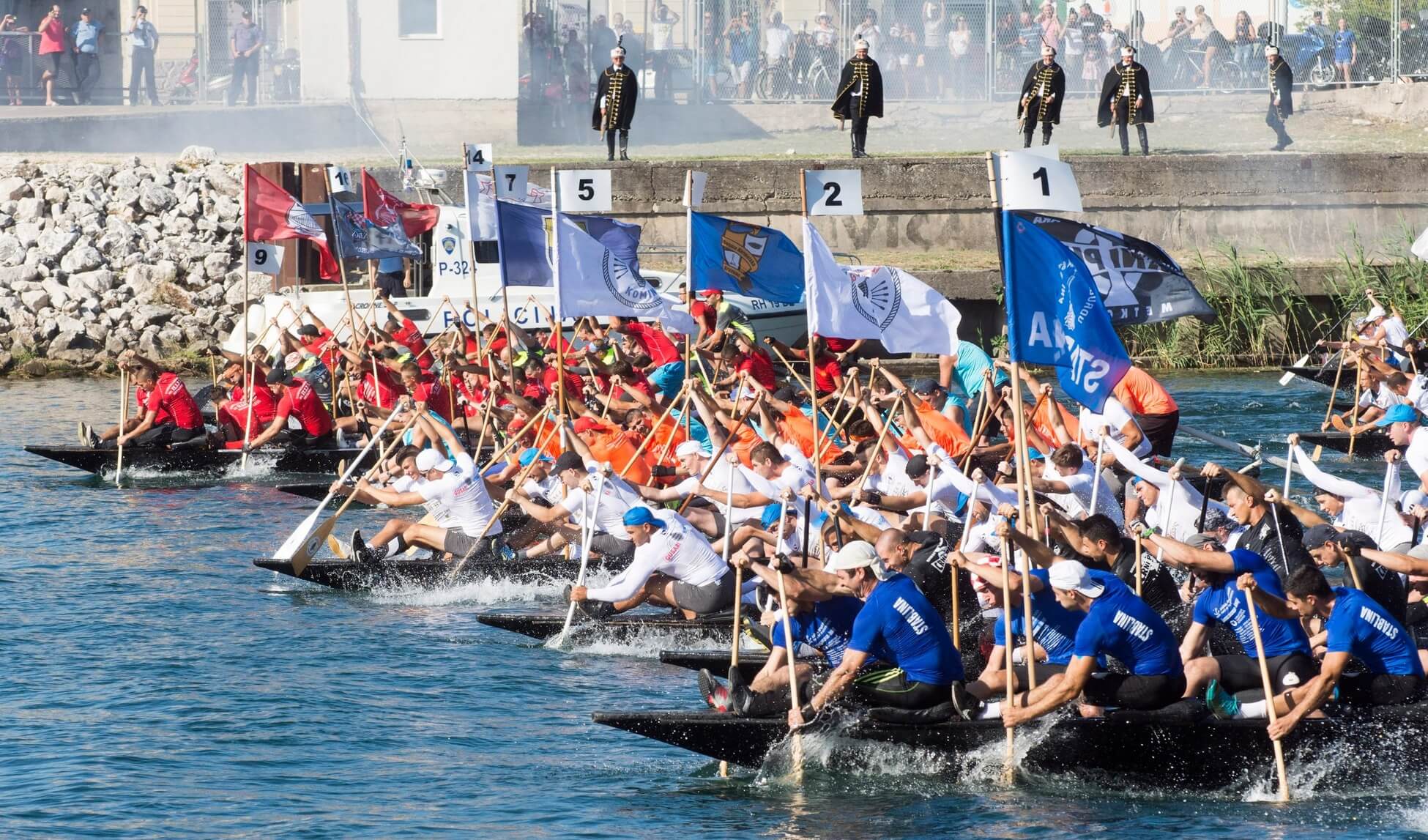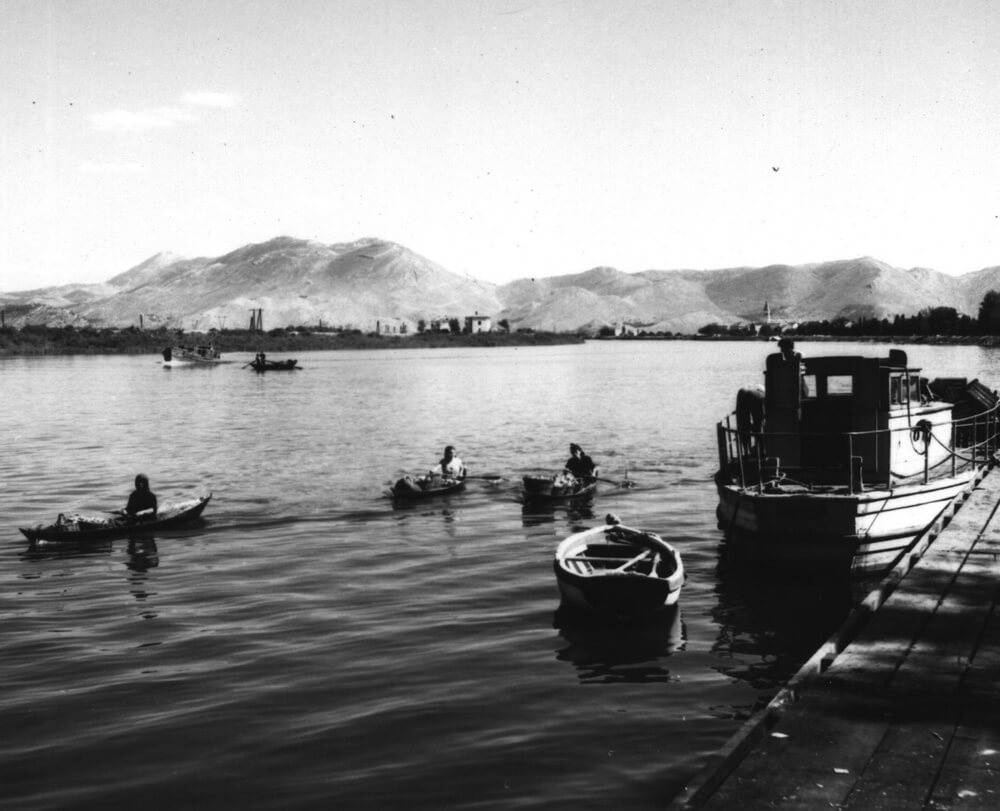History
To paint a better picture about the two traditional Neretva river valley vessels, trupica and ladja, we could compare trupica to a nowadays car and ladja to a nowadays truck or a tractor with a wagon. Today, car is more of a need than a luxury, especially in rural homesteads. Those who do agriculture to any degree certainly need a tractor or a motocultivator with a wagon. And while going out on weekends without a car is unimaginable to today’s youth, in past times young men from the Neretva river valley used to pick up girls in trupicas.
Older generations are very well aware of ladja’s importance to the people from the valley.
It was used to transport both cargo and people since the river was the most important communications route.
Long story short – People were born in ladjas and died in them.
Existing researches, records and literature on traditional vessels from the Neretva river valley
One of the most important traditions included the heritage of people living in the Croatian part of the Neretva river (Neretva river valley) are traditional, autochthonous vessels, trupas and ladjas. These vessels were once the only forms of transportation in predominantly swampy terrains of the Neretva river valley.
Oldest existing data about traditional vessels of the Neretva river valley date back to the 17th century and it can be found in Venetian sources, as well in the “Kronika fra Pavla Šilobadovića o četovanju u Primorju (1662.-1686.)”. (“Fra Pavao Šilobadović’s chronicle on military formations in the coastal area”).
In these sources vessels from the Neretva river valley are mentioned as “čopulas”, which is a name for a simple boat that was present along the Slovenian and Croatian Adriatic coast. The Chronicle also states that “on 12th of July 1665. one Alibegović of Gabela with but an 18 heroes in 3 čopulas went to the isle of Korčula and captured 2 girls…” According to these data and to the number of people manning one čopula (six), we can come to a conclusion that the said vessel is a larger one, which Venetians considered to be of the same sort as the usual boats from the Adriatic coast. In this case name čopula or čopul refers to the larger of two Neretvanian vessels, the ladja.
Important data on traditional vessels of the Neretva river valley can be found in the Italian travel writer Alberto Fortis’s book “Viaggio in Dalmazia” (“A voyage through Dalmatia”), which was printed in Venice in 1774. In this travelogue Fortis writes: “Boats which Neretvanians use to sail their river are very small and light. They call them ćopulas, which is the same name Morlachs from Krka and Cetina rivers use for their vessels… No difference between bows and sterns can be seen on this ćopulas and they have no side skirts. Travelling in them is a terrifying experience due to their small size and the fact that a person is positioned very close to the water. Boatmen have no oars, they thrust them forward using small pads four feet in length, sitting on the bottom with their legs crossed.”
In his book “Saggio Storico-statistico-medico sopra l’antica citta di Narona” (“Historical essay on health and natural science of the ancient town of Narona”) which was printed in Bologna in 1842., Split’s own doctor and naturalist Francesco Lanza (1808-1892) brings his precious description of the early 19th century Neretva river valley’s culture, history, economy, ecology and health to broader audience. In the third chapter, on Neretva’s ancient port, he writes: “Moreover, I se that in today’s circumstances in that area […] the only vessels used by the residents are so called ladjas or trupinas, miserable vessels made of few planks that barely remind of the nautic’s early childhood, which can be used only to cross the river or a small pond…” Later in the book Lanza describes the ladja’s specific shape (it is best to picture an overturned turtle up to 5 feet in length) and emphasizes its simplicity (they are entirely empty, with no deck to walk on and no ballast). He is of an opinion that a trupa is faster than a ladja and that its simple construction “allows it to cross any swamp, of any water level…” He also describes ladja’s and trupa’s importance to peasants of the Neretva river valley (Inhabitants use them on a daily basis […] which makes them an absolute necessity to each one of them and therefore there are countless numbers of them in existence).
British archaeologist and travel writer sir J. Gardner Wilkinson (1797. – 1875.) travelled through Dalmatia and Montenegro in the summer of 1844., writing down interesting facts from everyday life of certain areas, comprising an important historical source containing important data about life in Dalmatia and the Neretva river valley. This was the basis of his comprehensive work “Dalmatia and Montenegro: With a Journey to Mostar in Herzegovina, and Remarks on the Slavonic Nations; The history od Dalmatia and Ragusa”, published in London in 1848. Chapter titled “Nerenta” brings an interesting description of Neretvanian boats. Sir Gardner Wilkinson said that Neretvanian women commandeer little boats that look like carved logs and that he also saw larger boats manned by 5 or 6 men.
Valuable data about traditional vessels of the Neretva river delta can also be found in the book “La Dalmazia: romana – veneta – moderna: Note e ricardi di Viaggio” by Zadar’s travel writer, journalist and publisher Josip Jozo Modrić. In one of its forty chapters titled “Nerenta” Modrić describes his visit to the Neretva river valley (Modrich 1892: 198.210).
Along with numerous interesting facts about everyday life of Valley’s inhabitants, he mentions the traditional vessels: “What’s also interesting is the moving and encounters of small boats called trupinas. These are like little gondolas, narrow, slender and light, they can pass through every secondary canal between the river and surrounding swamps, where there’s but a centimetre of water. And when there’s no water whatsoever, the peasant simply puts his boat on his shoulder and carries it elsewhere. We’ve ,met several of them that purposely crashed into the river’s soft banks in order to avoid great waves from the steamboats.” This description makes it clear that the boat in question is a trupa.
20th century data about trupas and ladjas can be found in texts by Ilija Burić and Trpimir Macan.
In Vol. 3, No. 4 of the nautical scientific magazine Naše more from 1956 Burić wrote an article titled “Plovila u donjoj Neretvi” (“Vessels of lower Neretva”). The article contains valuable descriptions of the ladja and the trupa, primarily their appearance and dimensions.
Croatian historicist and lexicographer Trpimir Macan is the author that wrote the most comprehensive text on Neretvanian vessels. His article “Stari pučki čamci na području donjeg toka rijeke Neretve” (“Old peasants’ boats from the lower Neretva river area”) was published in Zbornik za narodni život i običaje Južnih Slavena, Knj. 43 in 1967. In this article the author describes ladja and trupa, their parts, construction and usage in detail. The article is an extremely valuable document containing large amount of important data which he collected through his ethnographic research.
Important contribution to learning about the Neretvanian ladja comes from dr. Ivan Jurić from Metković, a historian who authored numerous historical books about Metković and its surroundings. His article, titled “Flota neretvanskih lađa prema popisu iz 1927. godine” (“The Neretvanian ladja fleet according to the list from 1927”) was published 2013 in Hrvatski neretvanski zbornik br. 1. Meticulously and competently he presents a multitude of data on the Neretvanian ladja, but his text also provides a detailed insight in their home harbour, as well as important regulations about sailing and order keeping on the Neretva river. Dr. Jurić’s text also includes a noteworthy piece of information that says that “at the end of 1920s the Neretvanians had something of a fleet consisting of 327 vessels.”
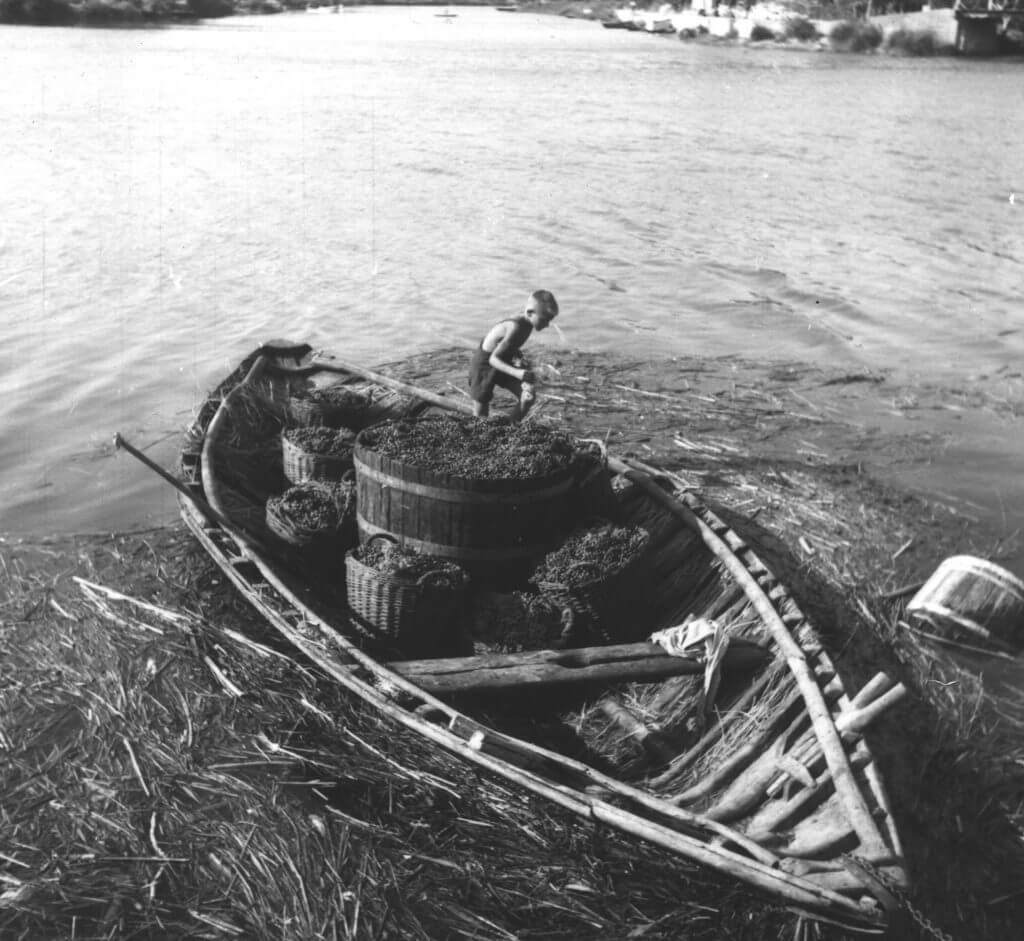 When it comes to transportation, road construction and technological modernization push trucks, tractors and motocultivators to the fore, while the need for ladja as a vessel for transportation gradually diminishes. Ladjas remained forgotten in numerous canals, covered with reeds and silt, slowly rotting away.
When it comes to transportation, road construction and technological modernization push trucks, tractors and motocultivators to the fore, while the need for ladja as a vessel for transportation gradually diminishes. Ladjas remained forgotten in numerous canals, covered with reeds and silt, slowly rotting away.
Some thirty years ago a group of villagers from Vid set off downstream in a ladja, down the Neretva river and along the coastline. Years after, they became an attraction in towns and villages they showed up in. Milojko Glasović, a photographer from Opuzen, often followed them on their journeys, taking pictures. Impressed by the pirates of Vid, it was him that came up with an idea of a pirate ladja race to restore and keep the memory of a ladja.
The realisation of the project began within the 7th anniversary of the military operation “Zelena tabla – Male bare” in Ploče on 13th September 1998. 18 teams took part in that first edition of the race, and the number would have been higher had some other teams had time to repair their rotten ladjas. The Marathons that followed stand witness to Neretvanians’ excitement about this event. Old, forgotten ladjas were being lifted up from the silt and restored. The number of competing teams is almost doubled. The only thing missing are the ladjas. Renowned shipbuilders from Rogotin and the island of Lastovo build new ones. Hot blood almost led to a “war” between neighbouring villages of Rogotin and Komin. Fighting for prestige (the money prize to be won is handsome, but not enough to fuel this urge to be the best), boundaries of fair play were sometimes crossed. Both new and old ladjas were being modified to make them faster, which led to devaluation of the traditional ladja from the Neretva river valley.
In order to secure equal conditions for everyone, it was decided to build identical ladjas. In the public tender from 2003. Jadran Bakica, a shipbuilder from Trogir, was chosen to build 33 identical vessels. 11 of them were ready for the 2004 Marathon, 5 new ones took part in the next year’s race and all 33 were completed in 2007., when all of them competed for the first time in the 10th anniversary race. Due to high maintenance costs it was decided that all of the ladjas should get plastic coating from the outside. This didn’t deprive them neither of their shape nor their authenticity.
Since majority of this region’s inhabitants work hard in agriculture in addition to their regular jobs, the only time to practice remains the evening, after the sun has set. As the sky darkens, the sound of pirate crews’ drums can be heard all along the Neretva river from Metković to Ploče, its tributaries Norin and Crna rijeka, as well as the Baćina lakes. Crews set out on the water to train as early as late May. New tactics are being developed…
https://maraton-ladja.hr/en/o-nama/povijest#sigProId48606a85ed
 HR
HR  EN
EN 
